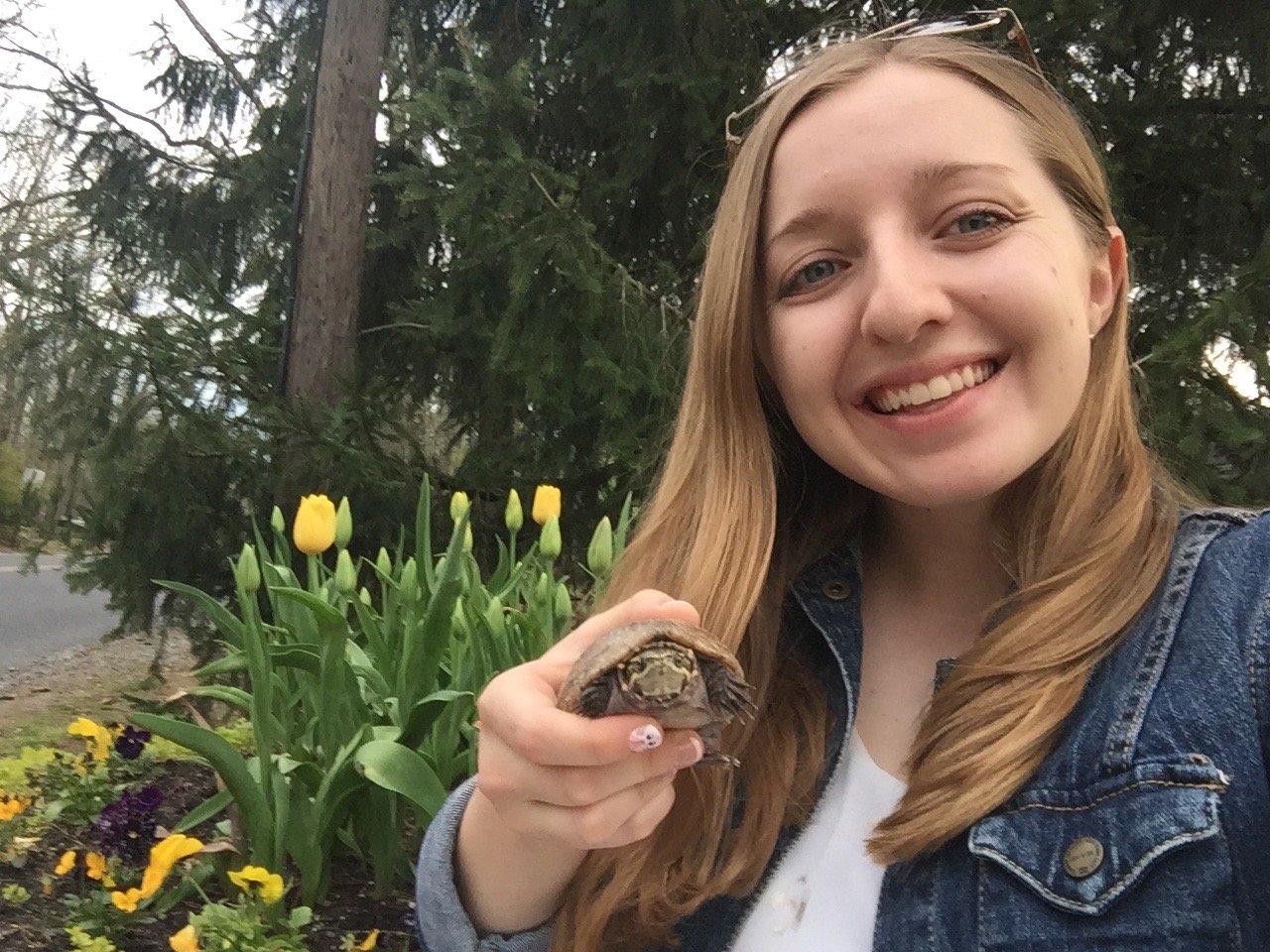Staff Profile: Bethany Holtz, Outreach Manager
Tell us about the first turtle you had experience with?
Bethany & Chuck
In high school, I was very close to my science teacher, Mr. Blatherwick. I went to a Quaker Friends school which was preschool to high school, though I only went to high school there. I used to spend my lunch period helping him with his middle school science labs. One day they went on a field trip and came back with water samples to test water quality. Unfortunately, a very tiny baby turtle was scooped up in one of the samples of murky water. This baby turtle became a class pet. I was initially very scared of the turtle so Mr. Blatherwick started dropping her on my desk.
After a while I came to love that little turtle. I'd rush off the school bus to make sure I was the first one in the room to feed her. At the end of the school day, I would check on her and say goodnight. As the school year came to an end I started asking where the baby turtle would go since Mr. Blatheriwck was retiring. I asked 3-4 times per day for weeks if I could have the turtle. On the last day of school, Mr. Blatherwick surprised me and said she was now mine. That baby turtle sparked a lifelong love of turtles and she now lives in my room. I named her Chuck, before I realized she was a girl, after Mr. Baltherwick.
What was the first time you saw a sea turtle?
My dad was working half the month in Florida when I was in high school. My family flew down one week to see where he had been working. He took us to see the Loggerhead Marinelife Center where they rehabilitated injured sea turtles. It was so cool to see the turtles up close and how the staff cared for them. It's funny that 10 years later I've collaborated with them on Sea Turtle Week projects through my job at SEE Turtles.
What made you decide you wanted to work with these animals?
Bethany at Adventure Aquarium
I knew I wanted to work in marine biology when I went to college. My parents encouraged me to do an internship at our local aquarium, Adventure Aquarium. I spent a week working in each department and had a blast working with the different types of animals. In the last week of my internship they asked if I would like a special project. They assigned me to work with a loggerhead sea turtle that was going to be released back to the ocean after a few weeks. They explained that since the turtle would be released back to the ocean we had to clean its tank and feed him without being seen so they wouldn't become accustomed to people. One day while cleaning the tank the turtle latched onto the siphon and I panicked that he would break off and eat a piece of plastic. I played a careful game of tug and war without ever looking over the edge of the tank.
Eventually I got the siphon back and the turtle was fine. I was so thrilled I had solved the problem. I hopped off the platform I was on and landed in ankle deep water. While I had been playing tug of war the hose the siphon was connected to had come out of the drain. I didn't panic and set out to clean up the water. I got all of the water cleaned up before the aquarium opened for the day. As I sloshed around in wet sneakers for the rest of the day I wasn't daunted by what had happened but invigorated that I solved the problem and I was part of that turtle's story. I realized how much I loved working with turtles and helping make sure they are healthy and safe.
Bethany participating in a research program with Inwater Research Group in Florida. Marine turtle research conducted under FWC MTP 204.
What part of this job do you enjoy the most?
I love receiving photos and videos from our partner organization around the world. I never know what I will open my phone and laptop to. Some days I get baby turtle videos from South America. Other days I get photos of children using of coloring sheets in Indonesia. It's always so special to see the reach our work has!
What do you think makes SEE Turtles unique?
SEE Turtles provides grants to sea turtle projects in developing countries. I don't know of any other organization that does it to the extent and reach that we do. We help make sure that turtles are protected in areas that couldn't otherwise do so without our grant funds. We also make sure that our grants have a lasting impact. Our Billion Baby Turtles and Inclusivity Fund grants create jobs for local community members. Our recycling grants program encourages beach cleanups that turn that trash into items that can be sold and used rather than just adding trash to landfills. SEE Turtles doesn't just help protect turtles but also the people and environment where the turtles are. Our world is so interconnected and SEE Turtles doesn't leave anyone out.



